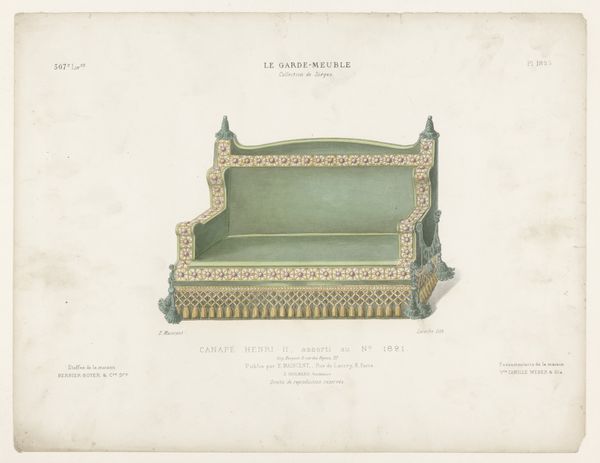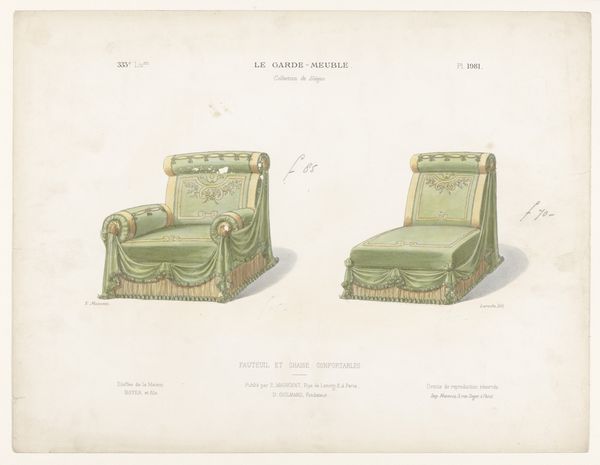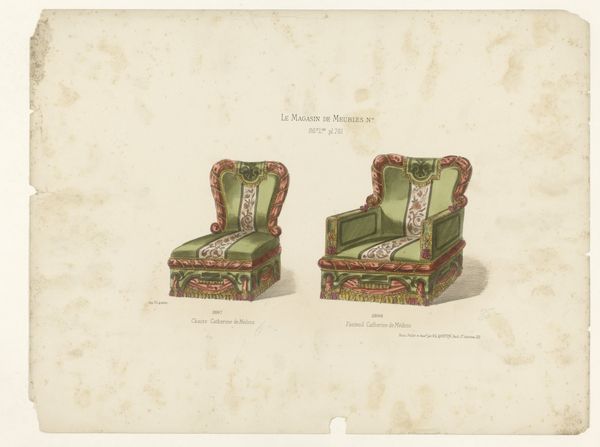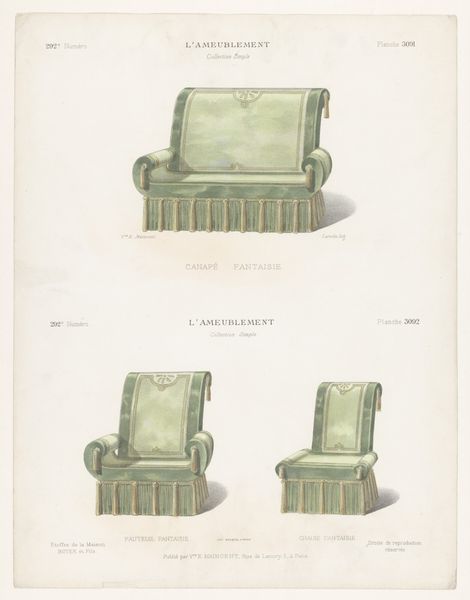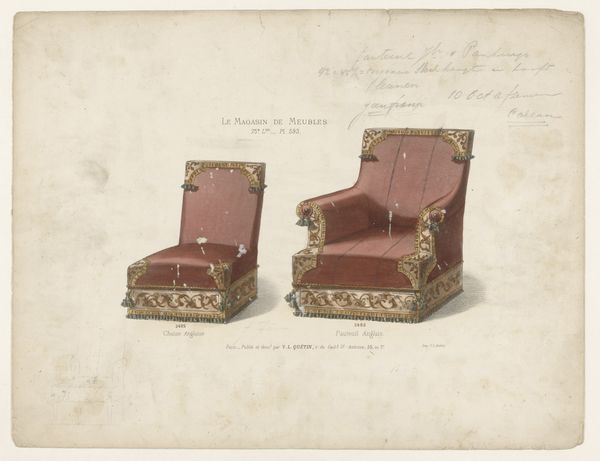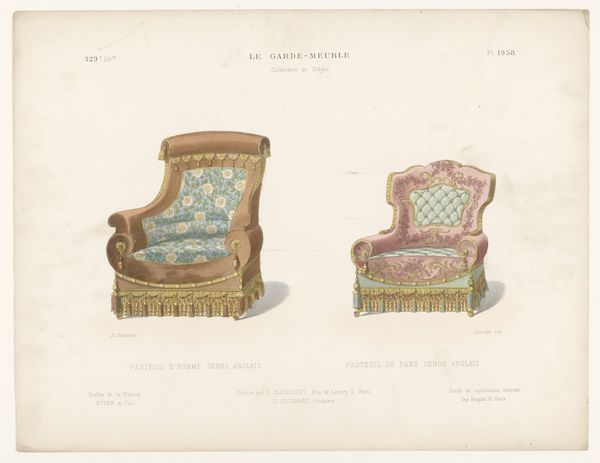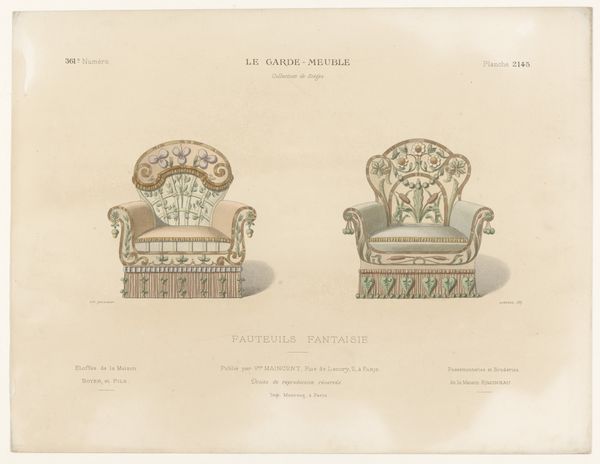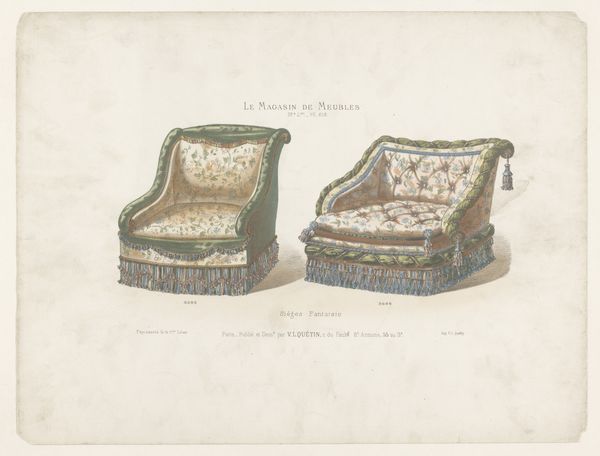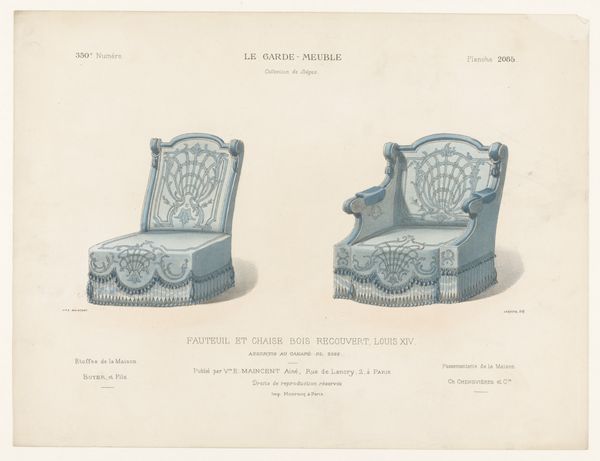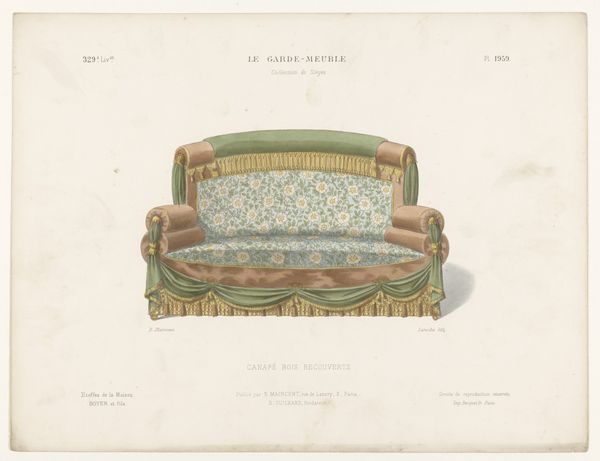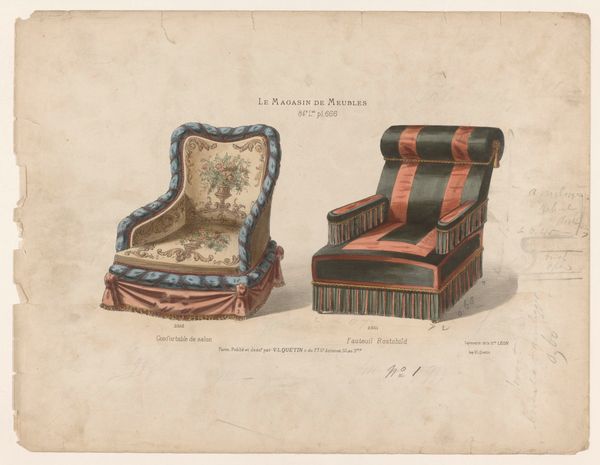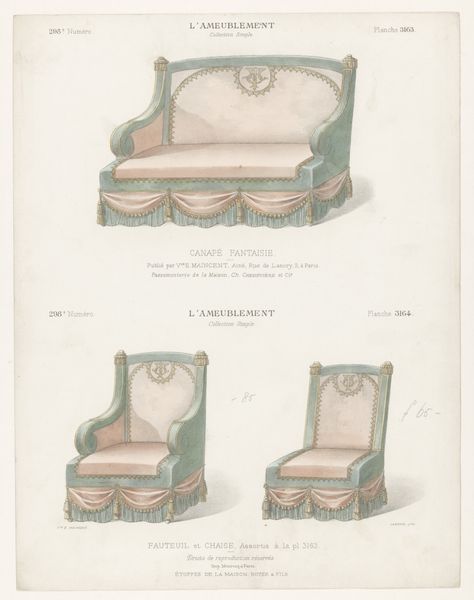
drawing, watercolor
#
drawing
#
watercolor
#
neo-romanticism
#
watercolour illustration
#
decorative-art
Dimensions: height 282 mm, width 364 mm
Copyright: Rijks Museum: Open Domain
Curator: This watercolour and ink drawing is titled "Fauteuil en Stoel," created between 1885 and 1895 by Léon Laroche. What leaps out at you when you see this, Editor? Editor: The subdued palette really speaks to me – it has a melancholy beauty, doesn't it? A sense of fading grandeur, maybe, a hint of longing. Curator: Indeed. Laroche’s composition portrays two chairs, or perhaps a chair and a stool – an armchair ("fauteuil") and a chair ("stoel"), rendered with striking precision. The use of watercolor gives it this ethereal quality, while the detailing suggests Neo-Romantic influences. Editor: The ornamental tassels almost look like tears. All the repeated geometrical patterns bordering the upholstery – it reminds me of the desire for order in times of emotional chaos, you know? Furniture as emotional scaffolding. Curator: I find the rigid structure interesting given its use of softened lines and watercolors – what seems rigid is in reality very pliable. Consider how furniture, particularly in the late 19th century, was loaded with cultural significance. It's not just something you sit on. It communicates status, taste, and aspirations. The repeating pattern could suggest the subject's wish to project an image of success, the fringe maybe is that image coming unraveled. Editor: Absolutely. And the green… for me, it evokes jealousy, even envy, in relation to the prestige conferred by these types of domestic objects. Curator: Perhaps. The green could also speak to the hope and envy one associates with wealth, health and happiness. Neo-Romanticism looked back to idealized pasts, reimagining beauty through wistful emotion and imagination. That may very well include aspiration and a tinge of sorrow. Editor: It’s interesting how Laroche freezes the scene, devoid of figures – only objects bearing witness. You are left to fill in all the blanks of these grand spaces. Curator: Exactly. We’re left to imagine the inhabitants, their stories, and what they left behind. Well, what began as a sketch of chairs turned into a conversation about the human condition. Art always has that kind of sneaky way. Editor: Leaving us, fittingly, with more questions than answers, isn't that the whole point?
Comments
No comments
Be the first to comment and join the conversation on the ultimate creative platform.
